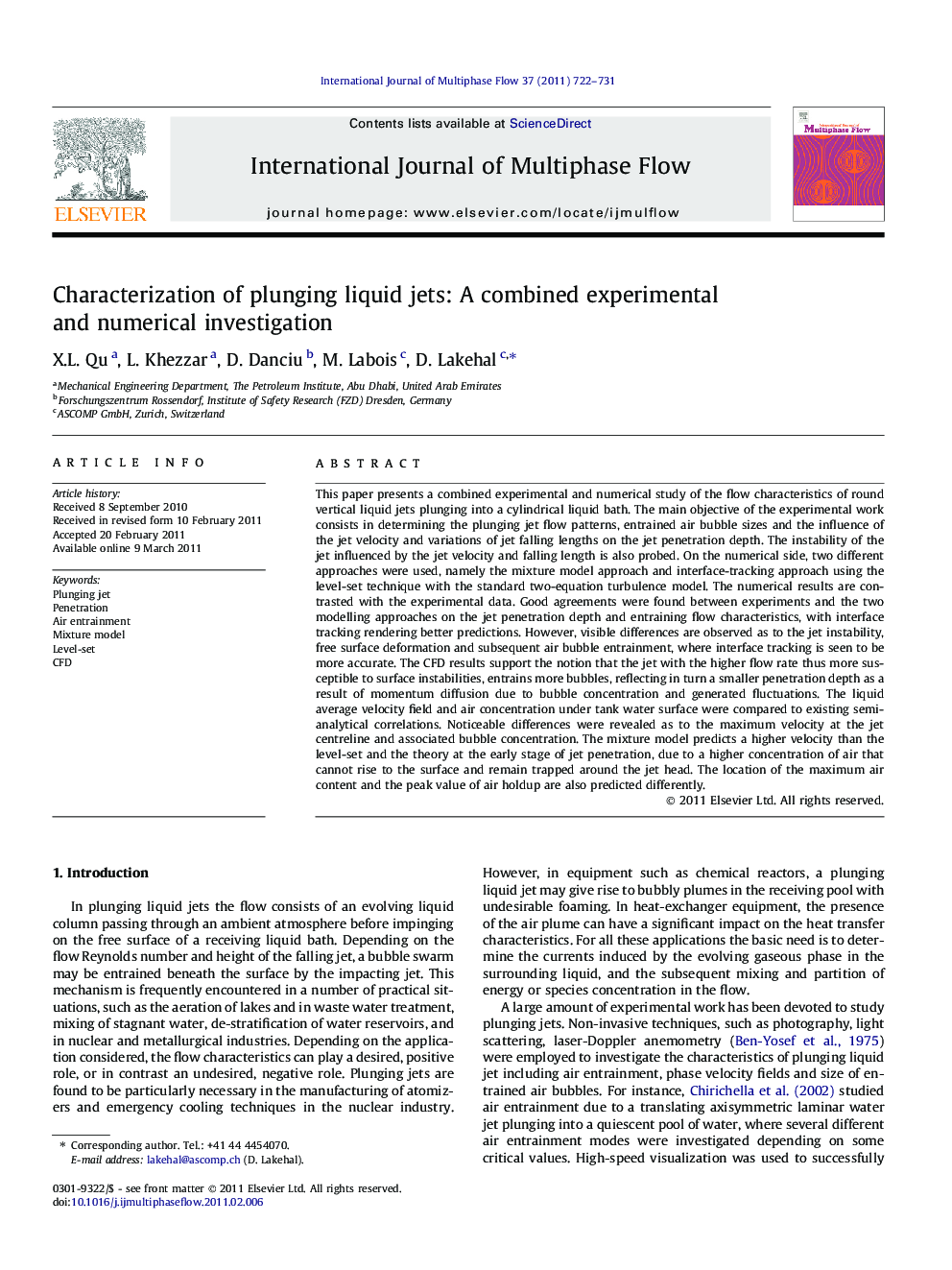| کد مقاله | کد نشریه | سال انتشار | مقاله انگلیسی | نسخه تمام متن |
|---|---|---|---|---|
| 666817 | 1458545 | 2011 | 10 صفحه PDF | دانلود رایگان |

This paper presents a combined experimental and numerical study of the flow characteristics of round vertical liquid jets plunging into a cylindrical liquid bath. The main objective of the experimental work consists in determining the plunging jet flow patterns, entrained air bubble sizes and the influence of the jet velocity and variations of jet falling lengths on the jet penetration depth. The instability of the jet influenced by the jet velocity and falling length is also probed. On the numerical side, two different approaches were used, namely the mixture model approach and interface-tracking approach using the level-set technique with the standard two-equation turbulence model. The numerical results are contrasted with the experimental data. Good agreements were found between experiments and the two modelling approaches on the jet penetration depth and entraining flow characteristics, with interface tracking rendering better predictions. However, visible differences are observed as to the jet instability, free surface deformation and subsequent air bubble entrainment, where interface tracking is seen to be more accurate. The CFD results support the notion that the jet with the higher flow rate thus more susceptible to surface instabilities, entrains more bubbles, reflecting in turn a smaller penetration depth as a result of momentum diffusion due to bubble concentration and generated fluctuations. The liquid average velocity field and air concentration under tank water surface were compared to existing semi-analytical correlations. Noticeable differences were revealed as to the maximum velocity at the jet centreline and associated bubble concentration. The mixture model predicts a higher velocity than the level-set and the theory at the early stage of jet penetration, due to a higher concentration of air that cannot rise to the surface and remain trapped around the jet head. The location of the maximum air content and the peak value of air holdup are also predicted differently.
► Plunging liquid–liquid jet can be in general well reproduced by CMFD.
► The CMFD strategy based on interface tracking provides a faithful picture.
► Jet instability and penetration depth are well reproduced by interface tracking.
Journal: International Journal of Multiphase Flow - Volume 37, Issue 7, September 2011, Pages 722–731